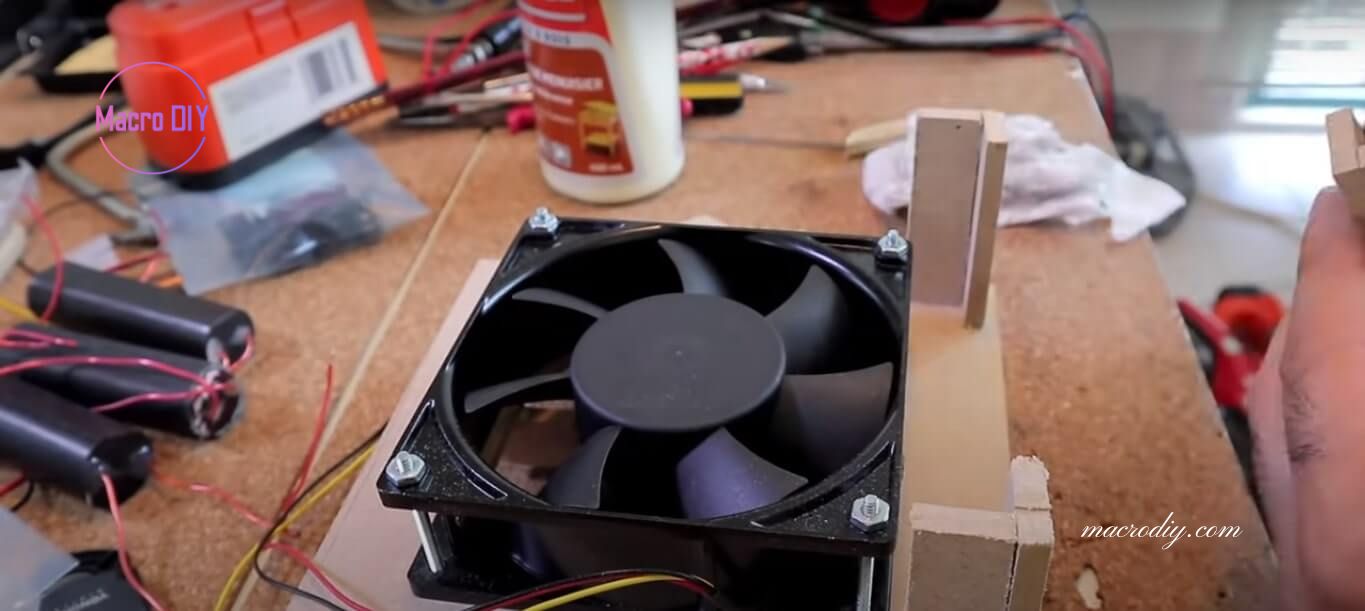Oh, hey there, my curious friend! Welcome to the cosmic realm of Thermoelectric Peltier devices! Embark on an adventurous DIY journey as we unravel the mysteries, explore practical applications, and delve into the heart of exciting projects.
Buckle up because we’re diving into the mesmerizing world of Thermoelectric Peltier devices. So, guess what happened to me recently? I stumbled upon a bunch of these intriguing contraptions, courtesy of Circuit Specialists. Now, if you’re wondering what in the tech universe these devices do, trust me, you’re not alone!
Let me spill the beans – these gizmos are like the rockstars of temperature manipulation. You feed them 12 volts of DC power, and boom! They start a symphony of heat transfer that’s nothing short of a scientific rollercoaster. But wait, before you picture me as a tech prodigy effortlessly conducting this thermal orchestra, let me share a secret – my first encounter with these devices was nothing short of a shocking experience. Yes, literal shocks!
Picture this: applying 12 volts, thinking I know the theory—zap! Shocked! Trying again—ow! Burned! It’s like standing naked in space, one side sizzling under the cosmic sun, while the other plunges into an icy abyss. Wild, right? And that’s just the tip of the iceberg, or in this case, the Peltier device.
Now, you’ve probably heard the textbook version of how these devices work, right? But let me tell you, theory meets reality in the most electrifying way. I mean, sure, I understood the Peltier Effect, the Seebeck Effect, and the Thomson Effect – all woven into this magical thing called the Thermoelectric Effect. It’s like a sci-fi dance between two conductors with different materials when they touch.
Now, let’s get real about the Seebeck Effect. It’s like a temperature-inspired DJ, dropping beats as a voltage across different materials. Tiny volts, but hey, they’re like the temperature whispers we can measure. Ever heard of thermocouples? They’re like the Sherlock Holmes of temperature measurement.
Now, in the Peltier Effect, things get spicy. Run some current through those junctions, and voilà! It can either cool down and absorb heat or crank up the temperature and radiate warmth. How? Well, that’s where the atomic quantum-level mystery kicks in. Electrons are like magical heat movers. Don’t ask me to explain it like a textbook; if you’ve got the secret sauce, drop it in the comments – we’re all here to learn!
Oh, and by the way, if you’re into leveling up your math and science game, check out Brilliant.org. They’re the real MVPs, offering interactive courses that make learning a breeze. But let’s get back to our thermal rollercoaster, shall we?
So, here I am, staring at these devices, fascinated by their ability to shuffle heat like a magician with cards. Picture this – one side chilling at 29 degrees, while the other cranks up to a toasty 60 degrees. And guess what? Flip the voltage, and the sides switch their dance partners. It’s like a temperature tango!
But hold on, these devices are not just about wild temperature swings; they’re power-hungry beasts. Meet the 50-watt maximum power limit – yes, they pack a punch. But fear not, my friend, for I’ve got a plan. Enter heat sinks – my trusty sidekicks in this thermal adventure. A bunch of fins and thermal compound later, we’re in business.
Join me in the next installment as we delve into the nitty-gritty of building your own Thermoelectric Peltier Refrigeration Cooling System. Trust me, it’s a ride you don’t want to miss. Stay tuned, because the 10 essential tips are about to drop, and we’re turning up the chill!
Contents
- Key Takeaways – Mastering Thermoelectric Peltier Refrigeration: A DIY Guide
- Decoding Thermoelectric Wonders: A Dive into the Sublime Effects
- Unraveling the Enigma: Peltier Devices Exposed
- Unveiling the Cosmic Magic: Peltier Devices in Action
- Crafting Cosmic Comfort: DIY Thermoelectric Peltier Cooling System
- Mastering the Cosmic Breeze: Optimizing Cooling Performance
- Savoring the Fruits of Cosmic Creation
- Unveiling the Power Play: Dancing with Thermoelectric Peltier Modules
- Unveiling the Tapestry: Chronicles of Thermoelectric Peltier Exploration
- Unveiling the Cool Cosmos: A Thermoelectric Peltier Odyssey
- Frequently Asked Questions about Crafting Your Thermoelectric Cooler/Generator
- Q1: How do TEC coolers fare in astrophotography?
- Q2: Any tips from a Peltier crash course?
- Q3: Why didn’t my fan assembly boost output?
- Q4: What’s the deal with TEG devices?
- Q5: Explain Seebeck and Peltier effects like a cosmic dance.
- Q6: How does the Peltier effect work?
- Q7: Can we see the heat in action?
- Q8: What’s the atomic-level scoop on temperature?
- Q9: How do electrons and thermal reservoirs play?
- Q10: Any cool hacks for optimal cooling?
- Q11: Can these devices power wearables?
- Q12: Any tips for a DIY project?
- Q13: How to solve the “cold feet” problem?
Key Takeaways – Mastering Thermoelectric Peltier Refrigeration: A DIY Guide
Here are the indispensable 10 tips to curate your Thermoelectric Peltier Refrigeration Cooling System DIY Kit:
- Temperature Mastery: Command the intricate dance of temperature differentials to unlock the full potential of your cooling system.
- Power Source Prowess: Choose your power play wisely, ensuring a robust and reliable energy source for your cooling odyssey.
- Cooling Choreography: Optimize the placement of Peltier modules, orchestrating a harmonious cooling symphony within your system.
- Heating Artistry: Embrace the creative warmth in heating applications, adding versatility and flair to your cooling endeavors.
- Insulation Mastery: Guard against thermal leaks by implementing effective insulation strategies, maintaining the integrity of your system.
- Heat Sink Ballet: Select and position heat sinks with precision, engaging in a cooling pas de deux that enhances efficiency.
- Fan Waltz: Choreograph a well-orchestrated fan routine to enhance airflow, creating a cooling crescendo within your setup.
- Thermal Interface Mastery: Mind the steps in thermal interface materials, ensuring seamless transitions and optimal heat exchange.
- Power Management Rhapsody: Fine-tune power usage, orchestrating efficiency to compose a symphony of seamless cooling.
- Cosmic Calibration: Calibrate your system to cosmic perfection, ensuring an otherworldly and optimal cooling experience.
Embark on this cosmic journey, turning these tips into your very own Thermoelectric Peltier DIY Kit for a celestial cooling adventure!
Decoding Thermoelectric Wonders: A Dive into the Sublime Effects
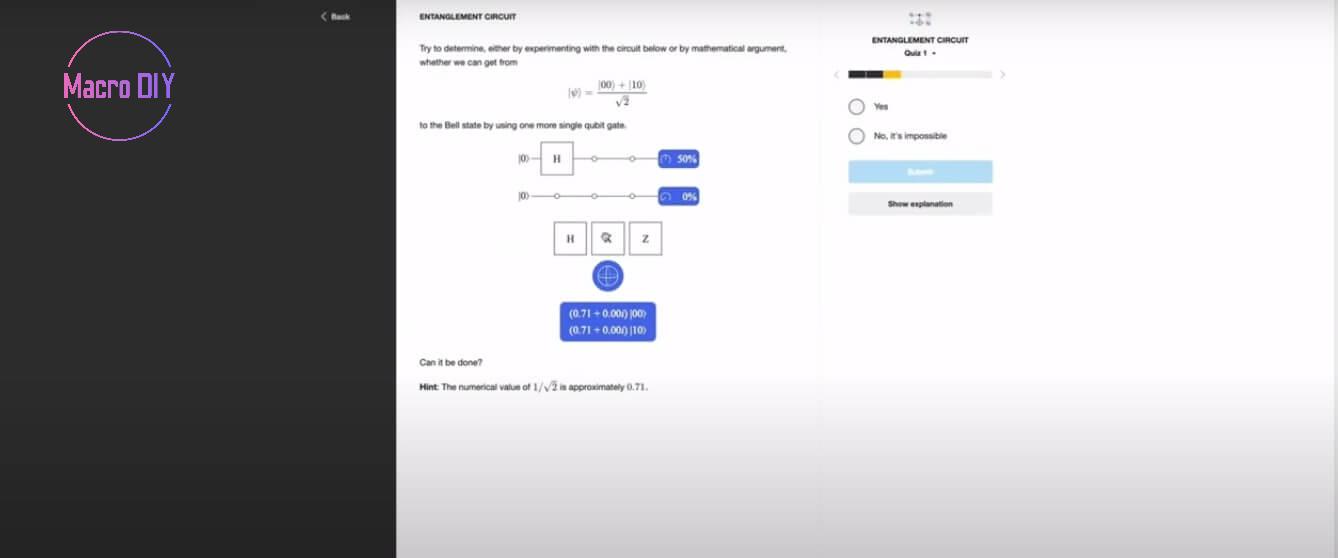
Alright, lovely minds, let’s unravel the enigma of Thermoelectric Effects – the heart and soul of our thermal escapade. We’ve danced with the devices, felt the jolts, and now it’s time to peek behind the curtains, where the real magic unfolds.
The Peltier Effect: A Thermal Waltz
Picture this: you’re at a cosmic ball, and the Peltier Effect is the maestro orchestrating the dance between temperature and electricity. When you run a current through certain junctions, these mystic devices start a mesmerizing ballet – they can either cool down, absorbing heat like a chill aficionado, or heat up, radiating warmth like a cozy fireplace. It’s the energy tango, and we’re just spectators in the thermal theater.
But here’s the kicker – the secret lies in the junctions, the meeting point of different materials. What happens at the atomic quantum level is a mind-bender – electrons, those tiny movers and shakers, play a role in whisking away the heat. It’s like a quantum hokey-pokey – electrons move it all about, taking the heat out, and that’s what it’s all about. Mind-blowing, right?
The Seebeck Effect: Temperature-Infused DJ Vibes
Now, let’s talk about the Seebeck Effect – our temperature-infused DJ dropping beats across different materials. It’s like a party where temperature differences create a voltage symphony. Ever heard of thermocouples? They’re like the MVPs of temperature measurement, translating the temperature dance into tiny volts. Imagine them as the translators at the temperature party – turning whispers into a language we can understand.
But here’s the plot twist – the voltage they generate is minuscule, measured in microvolts. Microvolts, people! And the more temperature difference, the louder the voltage chorus. So, these thermocouples become our temperature detectives, solving the mystery by measuring these tiny whispers.
Thomson Effect: The Silent Contributor
Now, let’s welcome the silent contributor – the Thomson Effect. It’s like the shy performer in our thermoelectric ensemble. When the temperature gradient is in play, the voltage takes a sneak peek into the mix. It’s like adding a subtle spice to our thermal concoction, influencing the voltage without stealing the spotlight.
The Dance of Electrons in the Quantum Ballet
Now, let’s venture into the heart of the matter – the mysterious atomic quantum level. Picture electrons as the prima ballerinas, gracefully gliding through the ballet of temperature and current. What happens in that tiny realm is a cosmic secret – electricity passing through different materials can cool them down. It’s an atomic-level choreography that defies our everyday understanding of heat.
And here’s where the electrons take center stage – they whisk away the heat, making the Peltier Effect a dance of invisible particles. The quantum ballet unfolds, leaving us in awe of the microscopic magic that shapes our thermal reality.
As we ponder these quantum wonders, let’s prepare to journey deeper. The atomic quantum level is a stage where electrons perform feats beyond our comprehension. So, buckle up, because the fusion of science and mystique is just getting started. In the next act, we’ll explore how these effects intertwine, creating the mesmerizing symphony we call the Thermoelectric Effect. Get ready for a cosmic ride through the thermal wonders!
Unraveling the Enigma: Peltier Devices Exposed
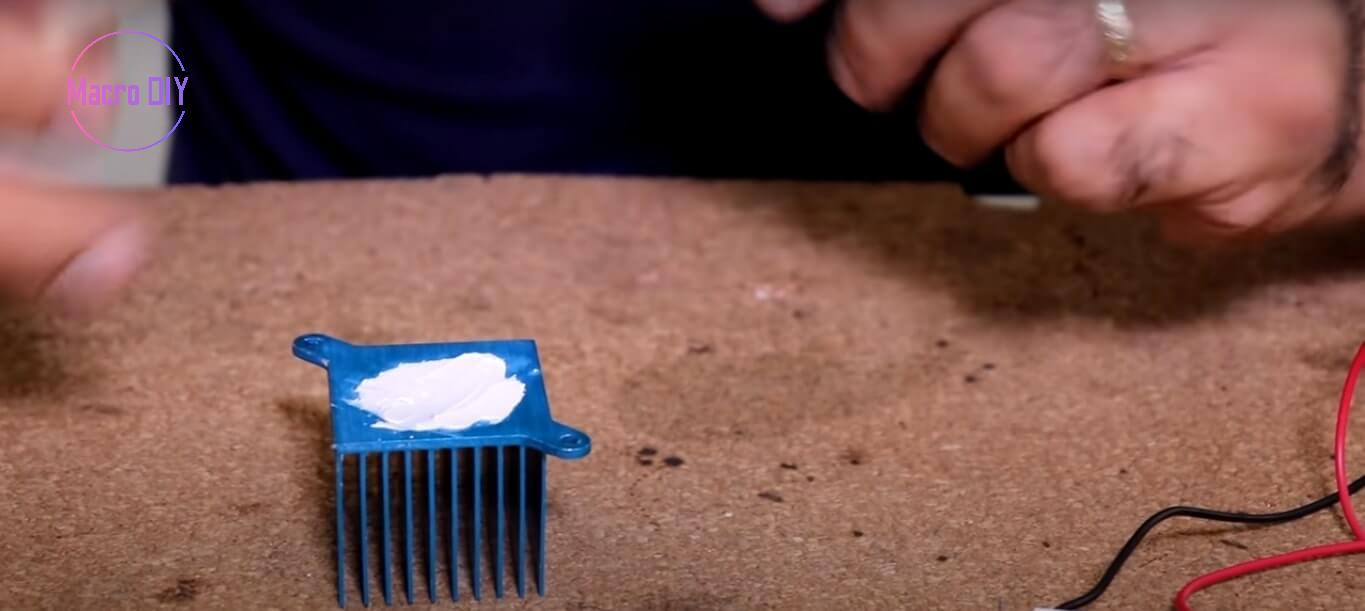
Hey, curious minds! Now that we’ve peeked behind the curtain of Thermoelectric Effects, it’s time to delve into the captivating world of Peltier devices. Buckle up because this journey is about to get as wild as a rollercoaster ride through the cosmos!
Atomic Quantum Ballet: Where Wonders Unfold
Ever wondered about the cosmic dance at the atomic quantum level? It’s the realm where electrons pirouette and perform feats that defy our everyday understanding of heat. Picture this – electrons moving through different materials, not just heating them up, but cooling them down. Now, isn’t that a plot twist in the quantum ballet of thermal wonders?
And here’s the kicker – it happens when you least expect it. Passing electricity through two materials creates a cosmic shuffle, with electrons taking the lead in whisking away the heat. It’s like watching a magician reveal the secrets behind the tricks – electrifying, mystifying, and utterly mind-boggling.
Peltier Effect: The Thermal Tango
Now, let’s spotlight the showstopper – the Peltier Effect. Imagine a device that, when infused with current, starts a thermal tango, a mesmerizing dance between cooling and heating. It’s the maestro of temperature manipulation, orchestrating a symphony of chill or warmth depending on the current’s direction.
Here’s the magic – run that current through the junctions of different materials, and voilà! One side cools down while the other cranks up the temperature. It’s like having a thermal puppeteer at your fingertips, pulling the strings of temperature with every jolt of electricity. The result? A thermal rollercoaster that defies the ordinary.
But let’s get real – this Peltier wonder isn’t without its quirks. It’s a power-hungry beast, demanding attention and maxing out at 50 watts. So, what’s the strategy? Introduce the trusty sidekick – the heat sink. Picture it as the superhero cape, swooping in to save the day, preventing overheating and ensuring our thermal show goes on.
Now, here’s where you come in, my fellow enthusiasts! Have your own theories about the quantum dance? Experienced the Peltier Effect in action? I want to hear it all! Drop your insights, explanations, or simply share the excitement. Let’s turn this into a cosmic conversation.
And speaking of expanding your cosmic knowledge, let me spill the beans on something extraordinary – Brilliant.org. Picture it as your secret weapon in conquering the realms of math and science. They’ve got interactive courses that make learning feel like a cosmic adventure. So, why not level up your understanding?
Now, as we wrap up this cosmic rendezvous, I’m passing the mic to you. What cosmic wonders have you unraveled, and what mysteries lie ahead? Stay tuned because our thermal journey is just heating up. In the next act, we’re diving into practical applications and efficiency challenges. Get ready for the cosmic ride of a lifetime!
Unveiling the Cosmic Magic: Peltier Devices in Action
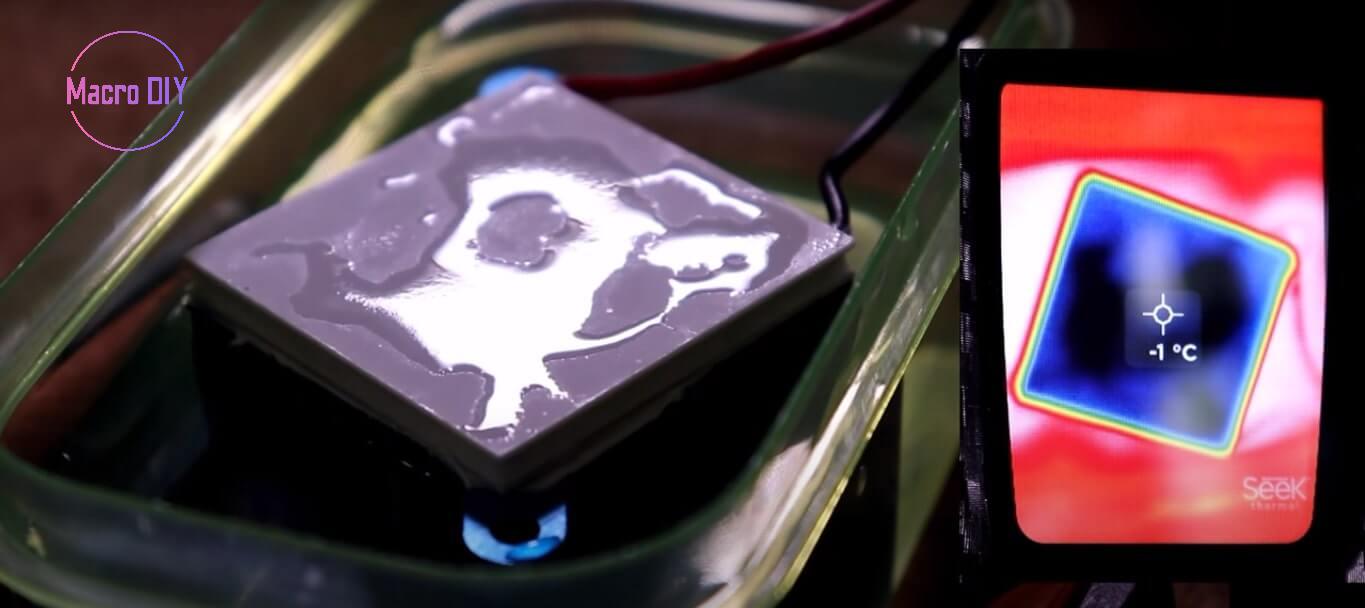
Hey, fellow cosmic explorers! Now that we’re knee-deep in the cosmos of Thermoelectric Peltier devices, let’s take a detour into the practical applications and wrestle with the efficiency challenges that make these wonders both captivating and tricky.
Harnessing Cosmic Power: Applications Explored
Ever dreamt of wielding cosmic power to cool your drinks or power a mini-fridge? Well, Peltier devices make those dreams a reality. These cosmic maestros, when paired with a dance partner like a heat sink, transform into mini-cooling virtuosos. Picture this – a hot summer day, and your DIY Peltier-powered cooler becomes the hero, keeping your beverages ice-cold like a cosmic breeze.
But here’s the twist – these devices, while cosmic in their potential, have a quirk. They thrive in small coolers or fridges. Why? Because they’re like the lightweight gymnasts of the thermal Olympics – nimble, quick, and perfect for those small-scale feats. So, if you’re planning to cool a massive space, you might need more than a Peltier-powered wand. It’s all about understanding their cosmic strengths.
Power Play: The Efficiency Dilemma
Now, let’s address the cosmic elephant in the room – power consumption. While Peltier devices dazzle us with their thermal ballet, they’re not the most power-efficient performers in the cosmic lineup. Imagine this: you’re running the show, and your Peltier star demands attention, gobbling up a max of 50 watts. It’s like having a backstage diva – brilliant but power-hungry.
And when you’re craving maximum efficiency, it gets trickier. Peltier devices dance to their own beat, and pushing them beyond limits won’t necessarily make the show more dazzling. It’s like turning up the volume when the music is already crystal clear – more doesn’t always mean better. So, here’s where the cosmic challenge lies – optimizing their performance without drowning in power consumption.
Read more: DIY mini drone kit
Cosmic Experiments: Heat Sinks to the Rescue
Enter the trusty sidekick – the heat sink. In my cosmic adventures, I’ve tinkered with heat sinks to enhance efficiency. Picture it as giving your Peltier star a refreshing break – a chance to cool down and shine brighter. Attaching a heat sink, with its myriad fins, creates a thermal oasis, whisking away excess heat and ensuring our cosmic performer doesn’t overheat.
But let’s get real – even with the heat sink superhero, Peltier devices can be power-wasters. Running them at max power doesn’t necessarily make them more efficient; instead, it turns the heat sink into a warm embrace. It’s a delicate cosmic dance, finding that sweet spot where efficiency meets optimal performance.
The Cosmic Tapestry: Power Wasting and Miniature Marvels
Now, let’s circle back to the cosmic irony – Peltier devices, with their power-hungry nature, find solace in the mini realms of small coolers or fridges. It’s like having a pint-sized superhero – not the powerhouse for every occasion but a lifesaver when it comes to cooling tiny corners of our cosmic existence.
As we navigate the cosmic tapestry of Peltier devices, it’s clear – they’re the unsung heroes of mini-cooling wonders. And while they might not be the reigning champs in power efficiency, their cosmic dance has a charm that’s hard to resist.
In our next cosmic expedition, we’ll untangle the complexities of creating a Thermoelectric Peltier Refrigeration Cooling System DIY Kit. Get ready for a DIY cosmic adventure where we turn these quirks into triumphs!
Crafting Cosmic Comfort: DIY Thermoelectric Peltier Cooling System

Welcome back, cosmic comrades! Now, let’s dive into the heart of the cosmic kitchen – crafting your very own Thermoelectric Peltier Cooling System. Brace yourselves for a DIY adventure that blends science, quirks, and a sprinkle of cosmic magic.
The Cosmic Spark: Experimenting with Peltier Modules and Heat Sinks
So, picture this cosmic scenario – I’m surrounded by a cluster of Peltier modules, each a potential star in my cosmic cooling constellation. Fueled by curiosity and a dash of audacity, I decide to experiment, not with one, but with nine of these cosmic modules. Why settle for a single star when you can create a celestial masterpiece?
As I gather my cosmic materials, including an arsenal of heat sinks, I envision a DIY project that will transcend the ordinary – a cooling system that dances to its cosmic rhythm. The stage is set, and the stars align as we embark on this cosmic crafting journey.
Crafting the Cosmos: Attaching Modules and Heat Sinks
Now, here’s where the cosmic orchestra begins. I delicately attach the Peltier modules to a wooden canvas, forming a cosmic symphony of potential. Each module, like a note in a celestial melody, holds the promise of cooling greatness. But what’s a star without its entourage? Enter the heat sinks – the unsung heroes that ensure our cosmic performers stay cool under the spotlight.
As I weave this cosmic tapestry, connecting the modules and heat sinks in a dance of conductivity, the excitement builds. It’s a celestial puzzle where each piece plays a vital role in the grand cosmic design. The cosmic DIY project unfolds, uniting the Peltier modules and heat sinks in a symphony of thermal delight.
Cosmic Hurdles: A Camera Malfunction in the Stars
Ah, the cosmic journey is never without its twists. Midway through my DIY spectacle, my trusty six-year-old camera decides to join the cosmic rebellion – a sudden malfunction that threatens to dim the brilliance of our cosmic creation. But fear not, fellow cosmic adventurers, for every glitch is an opportunity for a cosmic plot twist.
Undeterred by the camera’s cosmic tantrum, I press on, knowing that the cosmic show must go on. It’s a testament to the unpredictability of DIY projects – a reminder that even in the cosmos, challenges are simply invitations for creative solutions.
Read more: Small DIY walk-in cooler
Cosmic Solutions: Adjusting the Cosmic Airflow
With the camera hitch sorted – courtesy of some cosmic ingenuity – it’s time to address another cosmic challenge: ensuring optimal airflow around the heat sinks. Like a cosmic breeze, airflow is essential to maintain the harmony of our thermal symphony. I experiment with a simple yet effective solution – adjusting the placement of the heat sinks to allow for a smoother cosmic flow of air.
As the cosmic adjustments take shape, the cooling system begins to breathe with cosmic ease. It’s a reminder that every hiccup in the cosmic journey is an opportunity for innovation and improvisation. Our DIY project stands resilient, ready to conquer the cosmic heat with style.
In our next cosmic rendezvous, we’ll unravel the secrets behind the efficiency challenges and practical applications of our Thermoelectric Peltier Cooling System. Get ready for more cosmic revelations in our DIY cosmic odyssey!
Mastering the Cosmic Breeze: Optimizing Cooling Performance
peltier cooling systemAh, fellow cosmic crafters, the cosmic journey continues, and today’s chapter unravels the cosmic secrets behind optimizing the performance of our DIY Thermoelectric Peltier Cooling System. Picture yourself in the cosmic workshop, surrounded by the hum of Peltier modules and the dance of heat sinks – it’s time to delve into the art of mastering the cosmic breeze.
The Revelation: The Cosmic Significance of Airflow
As I stand amidst my cosmic creation, a revelation dawns upon me like a celestial epiphany – the significance of even airflow around the heat sinks. It’s the cosmic ballet of air, an unseen force that holds the key to unlocking the full potential of our cooling symphony. Uneven airflow, I realize, can disrupt the cosmic harmony and hinder the cooling prowess we seek.
Enter the Cosmic Maestro: The CD Cover
In my quest for the perfect cosmic airflow, inspiration strikes – a cosmic maestro enters the stage, and it’s none other than a humble CD cover. Yes, you heard it right – a piece of cosmic nostalgia turned airflow enhancer. With its smooth surface and curved design, the CD cover becomes the unsung hero, directing the cosmic breeze with finesse.
As I attach the CD cover to the fan, a cosmic transformation unfolds. The once-twisting column of air now flows with cosmic grace, gently caressing the heat sinks with a breeze that knows no chaos. It’s a cosmic dance, a symphony of airflow orchestrated by the unassuming CD cover. Who would have thought that a relic of the past could hold the key to cosmic cooling mastery?
Cosmic Experimentation: Fine-Tuning for Optimal Cooling
But the cosmic journey is never without its experiments. I find myself tweaking and adjusting – a cosmic alchemist in pursuit of the perfect cooling elixir. The CD cover, while a stellar addition, demands careful positioning. With each adjustment, I witness the cosmic ballet of airflow reaching new heights, and the temperature dance of our Peltier modules becomes a cosmic spectacle.
Read more: Homemade water jet cutting machine
Cosmic Reflections: Acknowledging Limitations and Learning
In the cosmic realm of experimentation, it’s essential to embrace both triumphs and limitations. As I reflect on this cosmic odyssey, I acknowledge the boundaries of my mechanical expertise. Crafting the perfect cosmic airflow requires a blend of art and science, and there’s always room for improvement.
So here’s to the cosmic lessons learned – to the CD cover that became a cosmic maestro, to the experiments that shaped our cooling symphony, and to the acknowledgment that in the cosmic workshop, every limitation is a stepping stone to greater cosmic mastery.
As we bid adieu to this cosmic escapade, our journey takes a turn towards unraveling the efficiency challenges and practical applications of our Thermoelectric Peltier Cooling System. Get ready for the next cosmic revelation, dear cosmic companions!
Savoring the Fruits of Cosmic Creation
Welcome, dear cosmic companions, to the crescendo of our DIY odyssey – the moment where cosmic aspirations materialize into the tangible fruits of our labor. With soldering irons and dreams in hand, we stand at the threshold of the finalization of our Thermoelectric Peltier Cooling System, ready to immerse ourselves in the juicy details.
Crafting Cosmic Conclusions: Finalizing the Cooling Symphony
As the last nut tightens and the final wire connects, a cosmic hush falls over the workshop. Our DIY Thermoelectric Peltier Cooling System stands before us, a testament to cosmic ingenuity. It’s not just a collection of components but a living, breathing entity – a cosmic contraption poised to conquer the realms of temperature manipulation.
In this cosmic moment, we bask in the glow of accomplishment. The journey from a mere idea to a tangible creation has been a cosmic dance of experimentation, and now, the stage is set for the grand finale.
Cosmic Gratitude: A Toast to Patrons and New Beginnings
But no cosmic journey is complete without a heartfelt nod to those who fueled our cosmic escapade. To our patrons, the cosmic benefactors who believed in this venture, we raise a toast. Your support has not only shaped this project but has also enabled a resurrection – the replacement of a camera that documented every cosmic twist and turn.
With a new lens in place, we’re poised to share the cosmic spectacle with even greater clarity. Patrons, this is your victory as much as ours, and together we stand at the brink of new cosmic horizons.
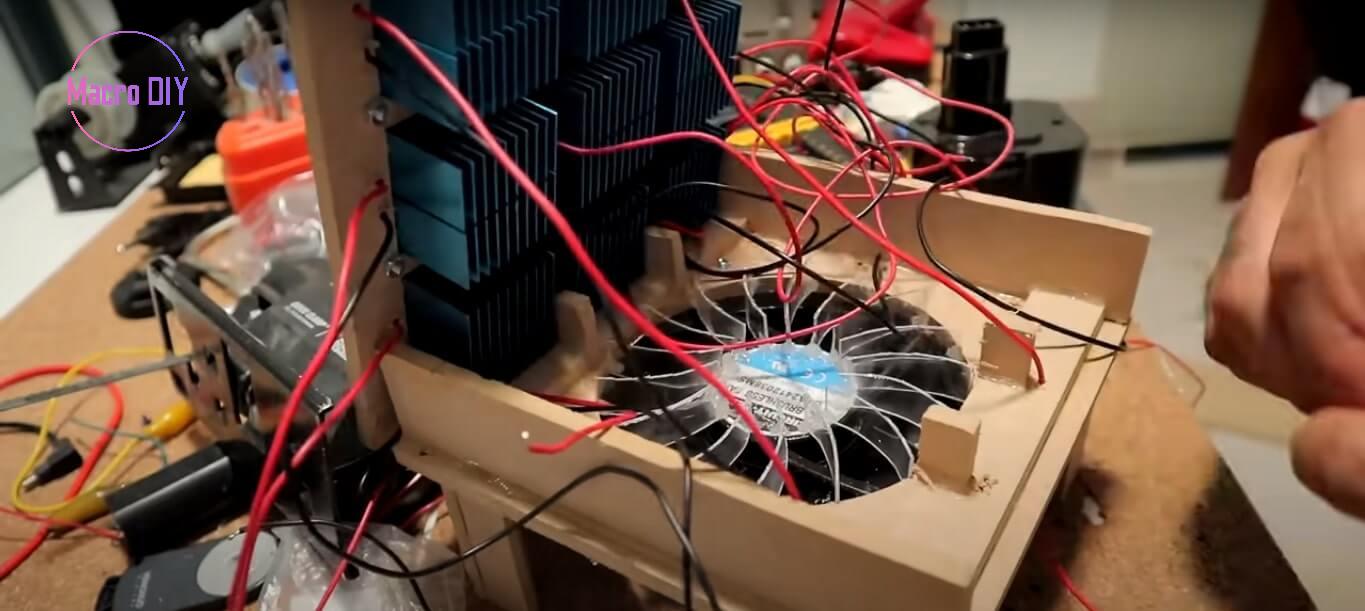
Testing the Cosmic Waters: A 24-Volt Fan and Boiling Antics
Now, brace yourselves for the cosmic twist in our tale. The system’s cooling performance is put to the ultimate test – a 24-volt fan and a cauldron of boiling water become our cosmic judges. The air crackles with anticipation as we watch the dance of temperature unfold.
Behold the surprise, dear cosmic companions! The cooling symphony orchestrated by our Peltier modules surpasses expectations. It’s a cosmic spectacle, a feat that elicits both awe and laughter. The cosmic dance with temperature reaches a crescendo, leaving us in stitches and marveling at the unexpected outcomes.
A Humorous Cosmic Culmination: When DIY Dreams Come True
As we revel in the surprises, let’s share a cosmic chuckle at the twists and turns of our cosmic escapade. Who would have thought that a DIY venture could evoke such mirth? Our Thermoelectric Peltier Cooling System, with all its quirks and triumphs, stands as a testament to the delightful unpredictability of DIY dreams.
Dear cosmic friends, the journey doesn’t end here. The fruits of our labor are not just tangible results but the memories, laughter, and shared moments that make this cosmic endeavor truly special. As we bid adieu to this chapter, stay tuned for the cosmic encore – the unveiling of efficiency challenges and practical applications. The cosmic saga continues!
Unveiling the Power Play: Dancing with Thermoelectric Peltier Modules
Greetings, my curious comrades, and welcome to the electrifying spectacle of our power generation experiment with Thermoelectric Peltier modules. In this electrifying escapade, we delve into the realms of energy creation, with hopes as high as the voltage we seek to harness.
Energizing Ambitions: Wiring the Modules in Series
Picture this – a workshop buzzing with anticipation as our author embarks on a daring endeavor. The goal? To transform the temperature differentials harnessed by Thermoelectric Peltier modules into a potent source of power. The plan is set in motion – modules are interconnected in series, creating a chain reaction of energy transfer.
The air hums with excitement as our author, armed with ingenuity and a soldering iron, weaves a web of connections. The series arrangement promises a cascade effect, a potential surge of power awaiting release.
Volting into Action: Testing with a 24-Volt Fan
The moment of truth arrives as we connect our makeshift power generator to a demanding 24-volt fan. Will the Thermoelectric Peltier modules rise to the occasion, ushering in a new era of power generation?
Alas, reality strikes, and our author is met with a less-than-electrifying outcome. The generated power falls short of the anticipated voltage, leaving us in a state of bemusement. The fan whirs, but the surge is more of a gentle ripple, a reminder that even the most ambitious experiments may encounter setbacks.
Read more: DIY motorized beach cart
Humorous Sparks: Embracing the Limitations
In the face of mild disappointment, our author, ever the humorist, shares a hearty laugh with the cosmic audience. The power generation experiment unfolds as a comedy of errors, a cosmic dance with electrons that doesn’t quite hit the desired crescendo.
Yet, as the laughter echoes through the workshop, so does the wisdom. The experiment, though not a powerhouse success, unravels valuable insights. Our Thermoelectric Peltier modules, while adept at cooling, exhibit limitations in the realm of power generation. It’s a revelation wrapped in humor, a reminder that every scientific venture, no matter the outcome, contributes to the grand tapestry of knowledge.
A Voltage of Gratitude: Acknowledging Thermoelectric Peltier Limits
In the spirit of scientific transparency, our author extends gratitude to the Thermoelectric Peltier modules, recognizing their prowess in cooling but acknowledging their constraints in generating substantial power. It’s a nod to the cosmic forces at play, a recognition that even the most cosmic ambitions encounter the occasional roadblock.
As we conclude this electrifying chapter, stay tuned for the next cosmic twist – a dive into the applications and challenges that weave through the intricate tapestry of Thermoelectric Peltier devices. The cosmic saga of exploration continues, sparked by the allure of the unknown.
Unveiling the Tapestry: Chronicles of Thermoelectric Peltier Exploration
Ah, my fellow cosmic adventurers, gather around as we unravel the final chapter in our saga of Thermoelectric Peltier marvels. In this cosmic rendezvous, we reflect on the lessons garnered and glimpse into the tantalizing possibilities that lie ahead.
Cosmic Contemplations: Reflections on the Project
As the dust settles in our workshop of wonders, our author dons the philosopher’s hat, weaving reflections on the journey with Thermoelectric Peltier devices. A cosmic ballet of electrons has unfolded, leaving in its wake a tapestry of knowledge.
The author, with a twinkle in their eye, shares the wisdom amassed – the intricacies of the Peltier Effect, the quirks of power generation experiments, and the cool dance of thermodynamics. It’s a cosmic dance card filled with insights, a testament to the boundless wonders tucked within the microscopic folds of scientific exploration.
A Cosmic Horizon: Pondering Future Experiments
But fear not, my cosmic compatriots, for this is not the end but a mere intermission. Our author, fueled by curiosity, casts their gaze to the cosmic horizon of future possibilities. Could our Thermoelectric Peltier system metamorphose into a stellar refrigerator, chilling our earthly concoctions with the magic of temperature differentials?
The cosmic canvas is blank, awaiting the strokes of experimentation. As we dream of refrigeration revolutions, the author extends an invitation for fellow cosmic enthusiasts to join the celestial dance. DIY projects beckon, promising a front-row seat to the cosmic spectacle of learning through hands-on exploration.
Cosmic Encouragement: DIY Ventures and the Art of Experimentation
In a cosmic call to action, our author urges readers to don their DIY capes and embark on quests of scientific self-discovery. The cosmic playground is vast, with Thermoelectric Peltier devices as cosmic companions, ready to unveil their mysteries through the art of experimentation.
A cosmic truth emerges – learning is not a linear journey but a celestial dance of trial and error. With each experiment, we pirouette closer to the heart of understanding, savoring the cosmic symphony of discovery.
The Cosmic Signature: Versatility and Uniqueness of Peltier Devices
As we bid adieu to our cosmic soiree, the author leaves us with a parting cosmic thought – the versatility and uniqueness of Thermoelectric Peltier devices. These cosmic wonders, with their ability to both cool and intrigue, stand as cosmic testaments to the marvels hidden within the atomic dance of electrons.
And so, my cosmic comrades, we conclude our cosmic exploration. The Thermoelectric Peltier devices, with their cosmic secrets, invite us to continue the dance of discovery. Until our cosmic paths cross again, keep exploring, experimenting, and uncovering the cosmic wonders that surround us. The universe, after all, is our boundless playground of knowledge.
Unveiling the Cool Cosmos: A Thermoelectric Peltier Odyssey
As we bid adieu to our cosmic exploration of Thermoelectric Peltier devices, let’s take a cosmic detour to recap the celestial revelations and share a few cosmic musings. Brace yourselves for the grand finale, my cosmic companions!
Cosmic Recap: The Decalogue of Peltier Wisdom
In our cosmic journey, we’ve traversed the atomic dance floors and embraced the enigmatic world of Thermoelectric Peltier devices. But before we draw the cosmic curtain, let’s do a quick waltz through the ten essential tips for crafting a Thermoelectric Peltier Refrigeration Cooling System:
- Temperature Tango: Master the dance of temperature differentials.
- Power Play: Choose your power source wisely.
- Cooling Choreography: Optimize the positioning of Peltier modules.
- Heating Ballet: Embrace the warmth of creativity in heating applications.
- Insulation Symphony: Guard against thermal leaks with effective insulation.
- Heat Sink Pas de Deux: Select and place heat sinks for a harmonious dance.
- Fan Waltz: Enhance airflow for a cooling crescendo.
- Thermal Interface Foxtrot: Mind the steps in thermal interface materials.
- Power Management Rhapsody: Fine-tune power usage for efficiency.
- Cosmic Calibration: Calibrate your system for optimal performance.
Cosmic Call to Action: Join the Thermoelectric Revelry
But, dear cosmic friends, our journey doesn’t end here; it merely enters a new cosmic phase. Macro DIY extends a cosmic invitation for you to share your cosmic exploits with thermoelectric Peltier devices. Dive into the cosmic conversation – share your triumphs, pose cosmic queries, or suggest new cosmic realms for exploration. The universe of knowledge expands when we dance together!
Cosmic Musings: A Journey Beyond the Atomic Veil
As we bid farewell to our Thermoelectric Peltier odyssey, let’s pause for a cosmic reflection. Our exploration has been more than a dance of electrons; it’s been a cosmic soiree of learning, curiosity, and hands-on revelation. The atomic veil, once shrouded in mystery, now flutters in the cosmic breeze of understanding.
Cosmic Curtain Call: A Heartfelt Gratitude
Before we dim the cosmic lights, a heartfelt thank you to you, my cosmic comrades, for embarking on this Thermoelectric Peltier journey. Your cosmic curiosity has illuminated the path of discovery. Until our cosmic paths cross again, keep dancing to the rhythm of knowledge, exploring the frontiers of science, and embracing the wonders that await. The universe, after all, is a cosmic playground of endless possibilities. Keep cool, keep exploring, and may the cosmos be ever in your favor!
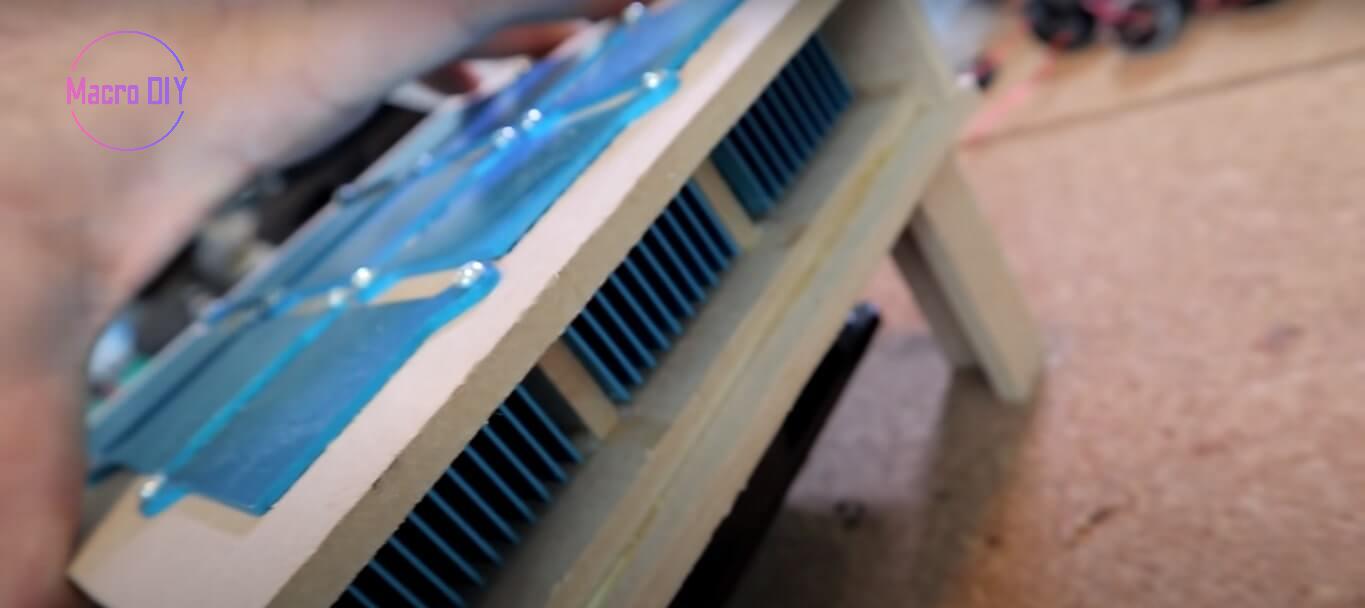
Frequently Asked Questions about Crafting Your Thermoelectric Cooler/Generator
Hey DIY enthusiasts! Ready for a cosmic exploration into the world of Thermoelectric Peltier devices? Let’s tackle some burning questions and share secrets that’ll make your cooler/generator project a stellar success.
Q1: How do TEC coolers fare in astrophotography?
TEC coolers are astrophotography darlings! Widely used to chill camera sensors, they combat thermal noise. But beware of their quick cooling – it might lead to icing over the sensor window.
Q2: Any tips from a Peltier crash course?
Absolutely! Picture this: a water-cooled compressor, 8 Peltier blocks, individual fans, and a meticulously milled aluminum block carrying water through. Power it up with a 15A buck down supply for a fabulous outcome.
Q3: Why didn’t my fan assembly boost output?
Simple! Instead of pumping air into the system, draw heat away. Fan blades pushing hot air down induce a low-pressure vacuum, pulling more cold air into the heat dissipation zone.
Q4: What’s the deal with TEG devices?
TEG devices shine at voltage generation with heat (up to 4.8V, 100°C difference). TEC is for cooling, TEG is for power – know the cosmic difference!
Q5: Explain Seebeck and Peltier effects like a cosmic dance.
Picture a cosmic dance of electrons. Heat, transmitted via photons, energizes electrons, making them drift. Voltage potential counteracts their velocity, transferring momentum to other conductor atoms, heating one and cooling the other.
Q6: How does the Peltier effect work?
Peltier works by electrons jumping the band gap, releasing heat (down) or cooling the material (up). Why? Different energy-level band gaps in semiconductors (n-type and p-type doping) make it happen.
Q7: Can we see the heat in action?
Absolutely! Imagine a metal cylinder holding a drink can on the cold side. Experience how quickly your soda can be cooled or heat a can of soup. That’s where power truly matters.
Q8: What’s the atomic-level scoop on temperature?
Temperature arises from atomic vibration caused by electromagnetic and nuclear forces. Atoms slowing down their “spin” near absolute zero create visible vibrations.
Q9: How do electrons and thermal reservoirs play?
Different materials, same electron sharing. Voltage application causes electrons to flow, creating a temperature drop. This difference allows heat travel – electrons don’t carry heat themselves.
Q10: Any cool hacks for optimal cooling?
Picture a watertight system channeling water through radiators, maximizing heat exchange. Use a coolant for optimal efficiency and create an airflow setup for the ultimate cooling experience.
Q11: Can these devices power wearables?
Absolutely cool! Thermoelectric devices on the skin can power small devices like medical transmitters, utilizing the temperature difference for a power boost. The future might see them energizing more gadgets!
Q12: Any tips for a DIY project?
Swap thermal paste for thermotransfer epoxy like ArcticSilver™, enhancing heat transfer and adhesion. Consider closed-cell foam insulation and explore stacking Peltier panels for increased temperature differences.
Q13: How to solve the “cold feet” problem?
A scientific solution! Place an electric blanket on her side, utilizing the Seebeck effect. Your DIY human Peltier device generating voltage sparks a warm, electric solution for cold feet.

